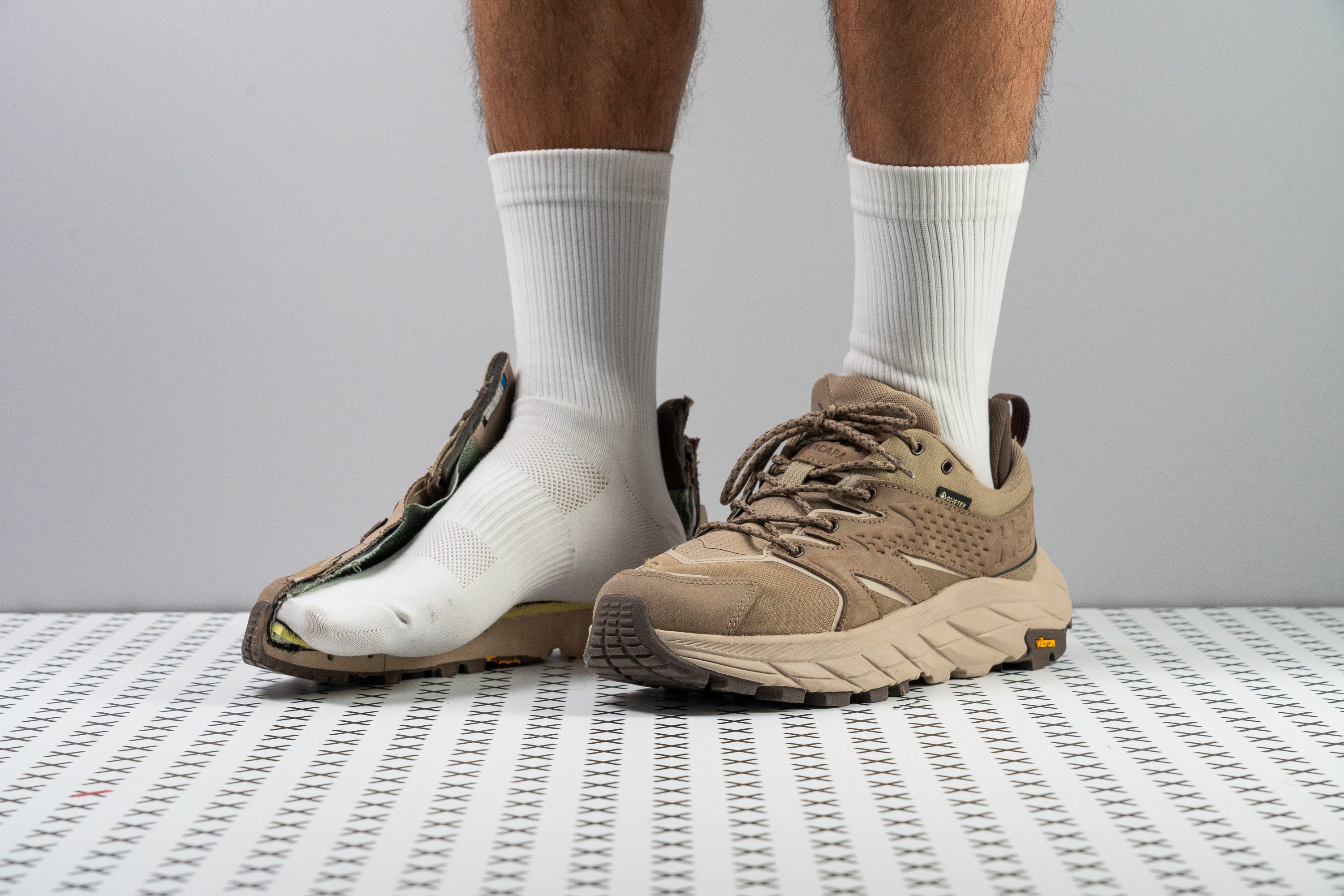Our verdict
- Top pick in best hiking shoes (2023)
- Top pick in best winter hiking shoes (2023)
Pros
- Mind-blowing cushioning
- Podiatrist-approved sole
- Excellent grip
- Top-notch waterproofing
- Lightweight
- Out-of-the-box comfort
- Roomy toebox
- Well-made
- Contains recycled materials
Cons
- Pricier than average
- Weird-looking heel
Audience verdict
- Top 25% in HOKA hiking shoes
Comparison
The most similar hiking shoes compared
+ + Add a shoe | |||||
|---|---|---|---|---|---|
| Audience score | 82 Good! | 83 Good! | 78 Good! | 80 Good! | |
| Price | $170 | $190 | $180 | $160 | |
| Trail terrain | Technical | Light | ModerateTechnical | Technical | |
| Shock absorption | - | High | High | Low | |
| Energy return | - | High | Moderate | Moderate | |
| Weight lab Weight brand | 13.9 oz / 393g 13.9 oz / 393g | 12 oz / 339g | 14.1 oz / 400g 15.3 oz / 434g | 13.3 oz / 378g 13.3 oz / 378g | |
| Lightweight | ✓ | ✓ | ✓ | ✓ | |
| Breathability | Warm | Warm | Warm | Warm | |
| Use | Day HikingSpeed HikingLight HikingSnow | Day HikingSpeed HikingLight HikingUrban hiking | Day HikingLight HikingSnow | BackpackingDay HikingSpeed HikingSnow | |
| Orthotic friendly | ✓ | ✓ | ✓ | ✓ | |
| Drop lab | 10.5 mm | 10.2 mm | 12.0 mm | 10.9 mm | |
| Size | True to size | True to size | Slightly large | True to size | |
| Midsole softness | Soft | Firm | Soft | Firm | |
| Difference in midsole softness in cold | Normal | Normal | Big | Big | |
| Torsional rigidity | Stiff | Stiff | Stiff | Stiff | |
| Heel counter stiffness | Moderate | Moderate | Flexible | Stiff | |
| Stiffness | Stiff | Stiff | Stiff | Moderate | |
| Outsole hardness | Average | Hard | Average | Hard | |
| Waterproofing | Waterproof | Waterproof | Waterproof | Waterproof | |
| Material | Leather | - | Mesh | - | |
| Season | Winter | Winter | Winter | Winter | |
| Toebox durability | Bad | Decent | Decent | - | |
| Heel padding durability | - | Bad | Bad | - | |
| Outsole durability | - | Good | Decent | - | |
| Width / fit | Narrow | Medium | Narrow | Medium | |
| Toebox width | Narrow | Medium | Narrow | Medium | |
| Lug depth | 5.0 mm | 2.3 mm | 4.9 mm | 4.5 mm | |
| Heel stack lab | 36.0 mm | 39.4 mm | 36.0 mm | 30.9 mm | |
| Forefoot | 25.5 mm | 29.2 mm | 24.0 mm | 20.0 mm | |
| Widths available | Normal | Normal | NormalWide | NormalWide | |
| Technology | Gore-TexVibram | - | Gore-TexVibram | Gore-TexOrtholite | |
| Heel tab | Finger loop | Finger loop | Finger loop | Finger loop | |
| Removable insole | ✓ | ✓ | ✓ | ✓ | |
| Ranking | #29 Bottom 25% | #24 Bottom 31% | #31 Bottom 11% | #27 Bottom 22% | |
| Popularity | #21 Bottom 46% | #14 Top 40% | #3 Top 9% | #5 Top 15% |
Size and fit
Size
Hoka Anacapa Low GTX fits true to size (122 votes).
Who should buy the Hoka Anacapa Low GTX
We feel that this hiking shoe from Hoka is very likely to meet your needs if you are after the following:
- a hiking shoe with the comfort and cushioning of a running shoe
- a waterproof shoe that keeps the foot warm and dry no matter how wet the weather gets
- a durable and protective hiker that still feels light on the foot

Who should NOT buy the shoe
For those who need a more substantial Hoka shoe for challenging terrain and backpacking, a more suitable option would be the Anacapa Mid GTX (for enhanced ankle support). And if you're looking for a plush shoe with less bulk in the heel, we suggest taking a look at the Danner Trail 2650.
Not so airy
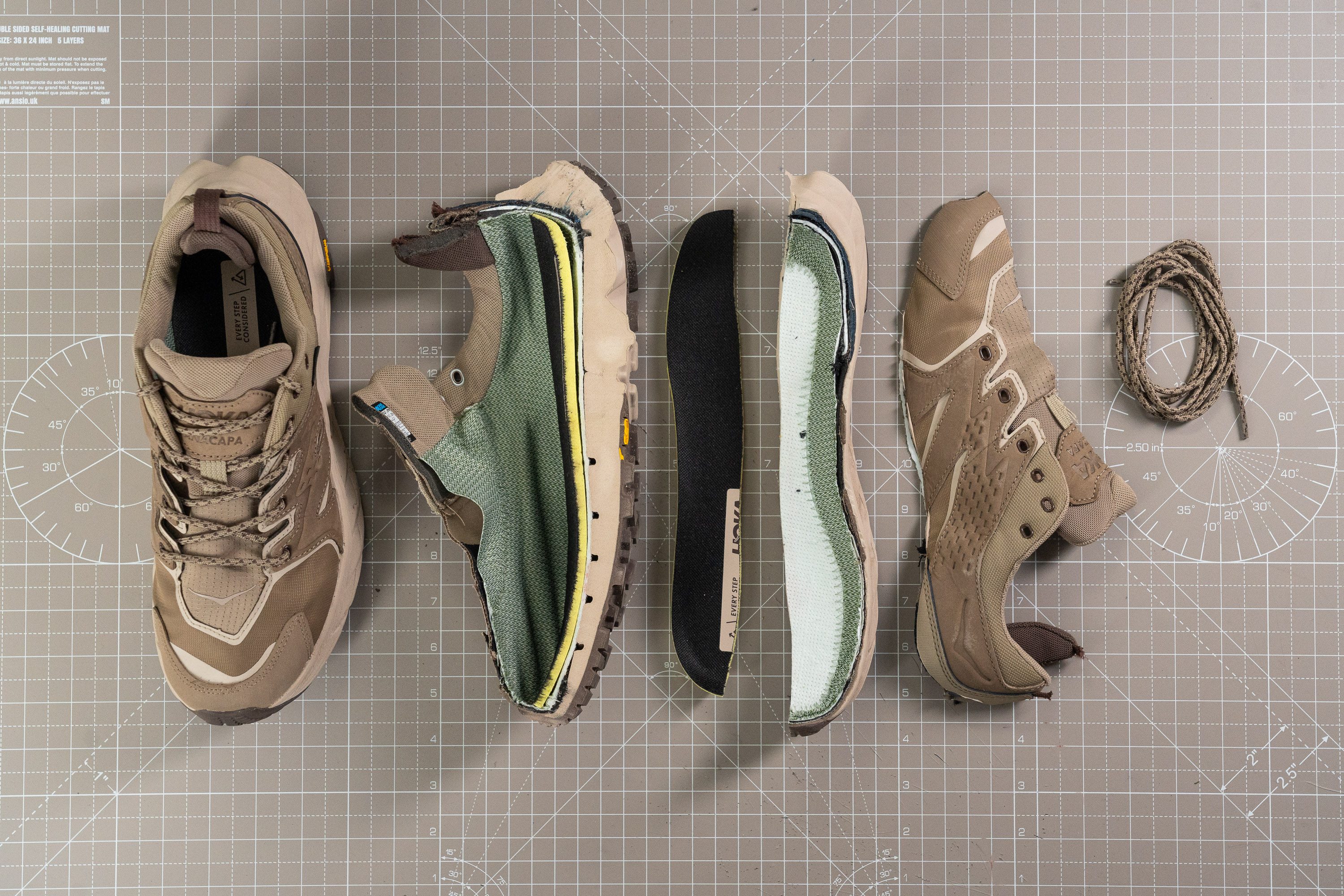
We've tested 200+ shoes in our lab, and it's become clear that Gore-Tex shoes don't perform well in our breathability tests. It almost feels as though the Anacapa Low GTX doesn't breathe at all!
When we tested the Anacapa Low GTX with our smoke-pumping machine, the results were clear. We had no choice but to give it the lowest score possible in breathability—1 out of 5.
Transitioning to the light test, it became clear that this shoe isn't designed for dog days. The Anacapa permits no light passage, implying a less-than-ideal breathability.
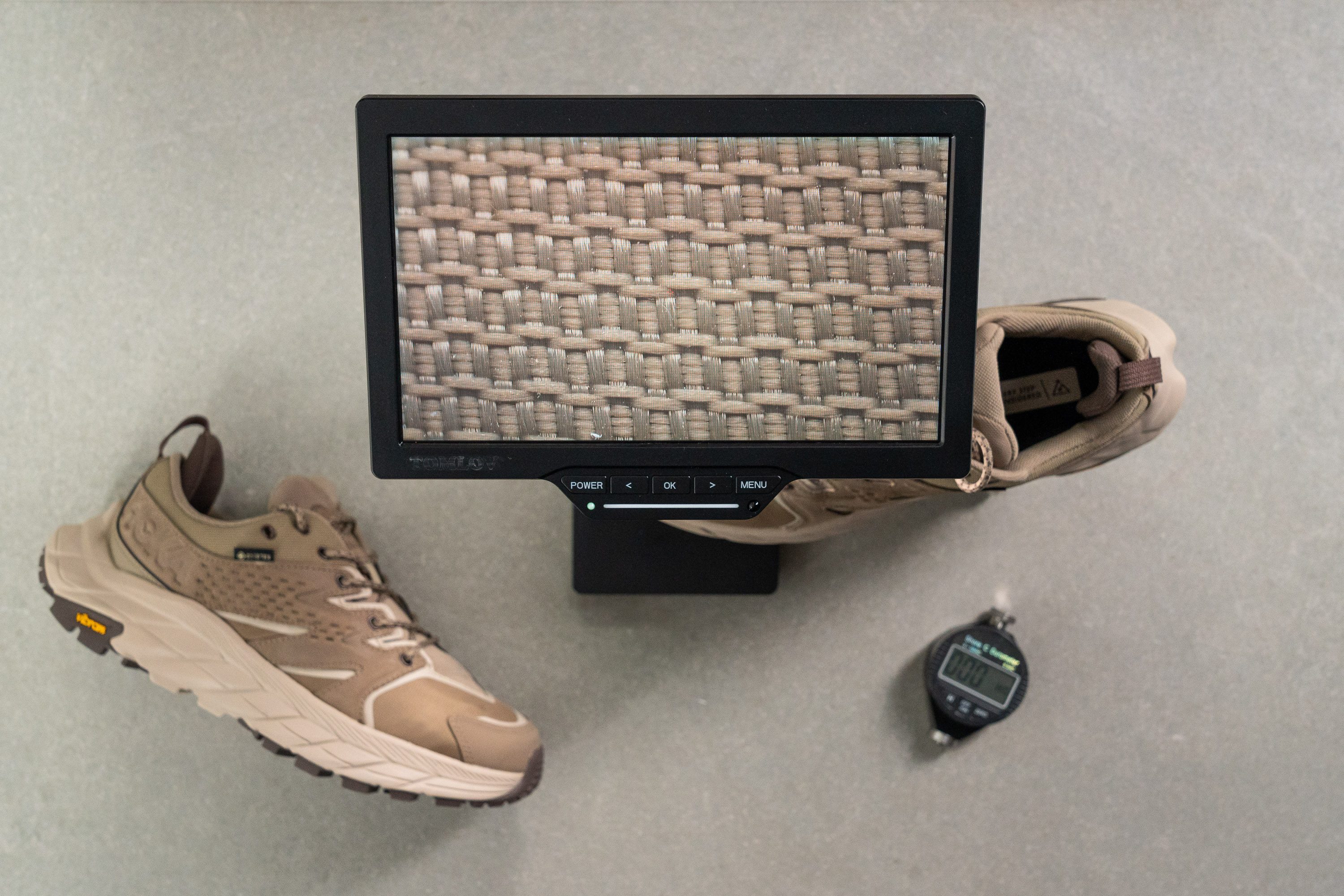
There is no opportunity for air to flow from the inside due to the intricate pattern created by Hoka designers. But on the bright side, the water can't seep through either!
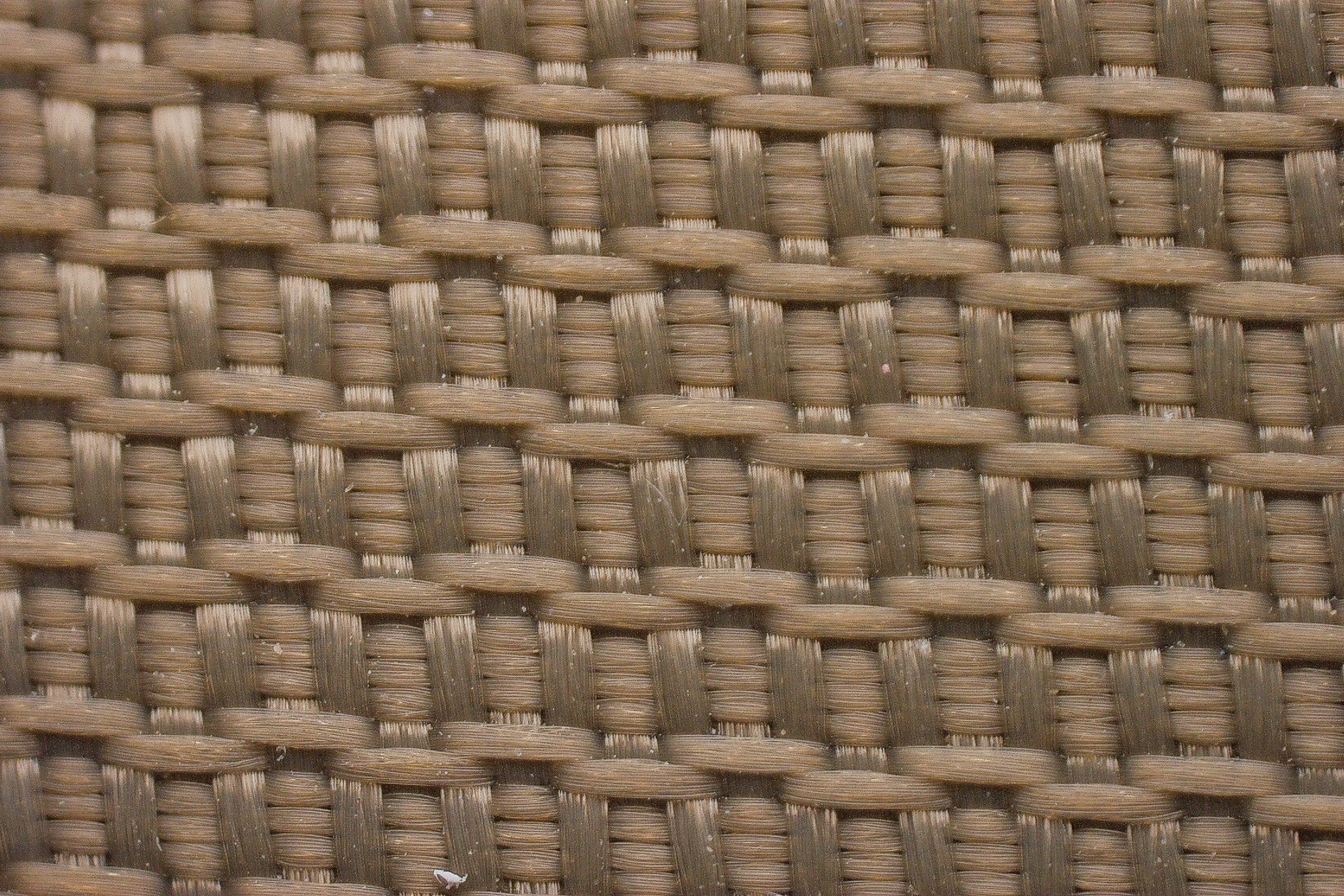
Impressively sturdy and skillfully made
We have a really good feeling about this hiking shoe's durability. Not only did the sole prove to be hard-wearing but the upper portion did as well. We took note of its ability to resist the effects of being scraped up by rocks and roots.
Back in the lab, we can actually confirm that this shoe is durable and long-lasting. It demonstrated exceptional performance in our Dremel test, standing out as one of the most rugged hiking shoes we have ever reviewed.
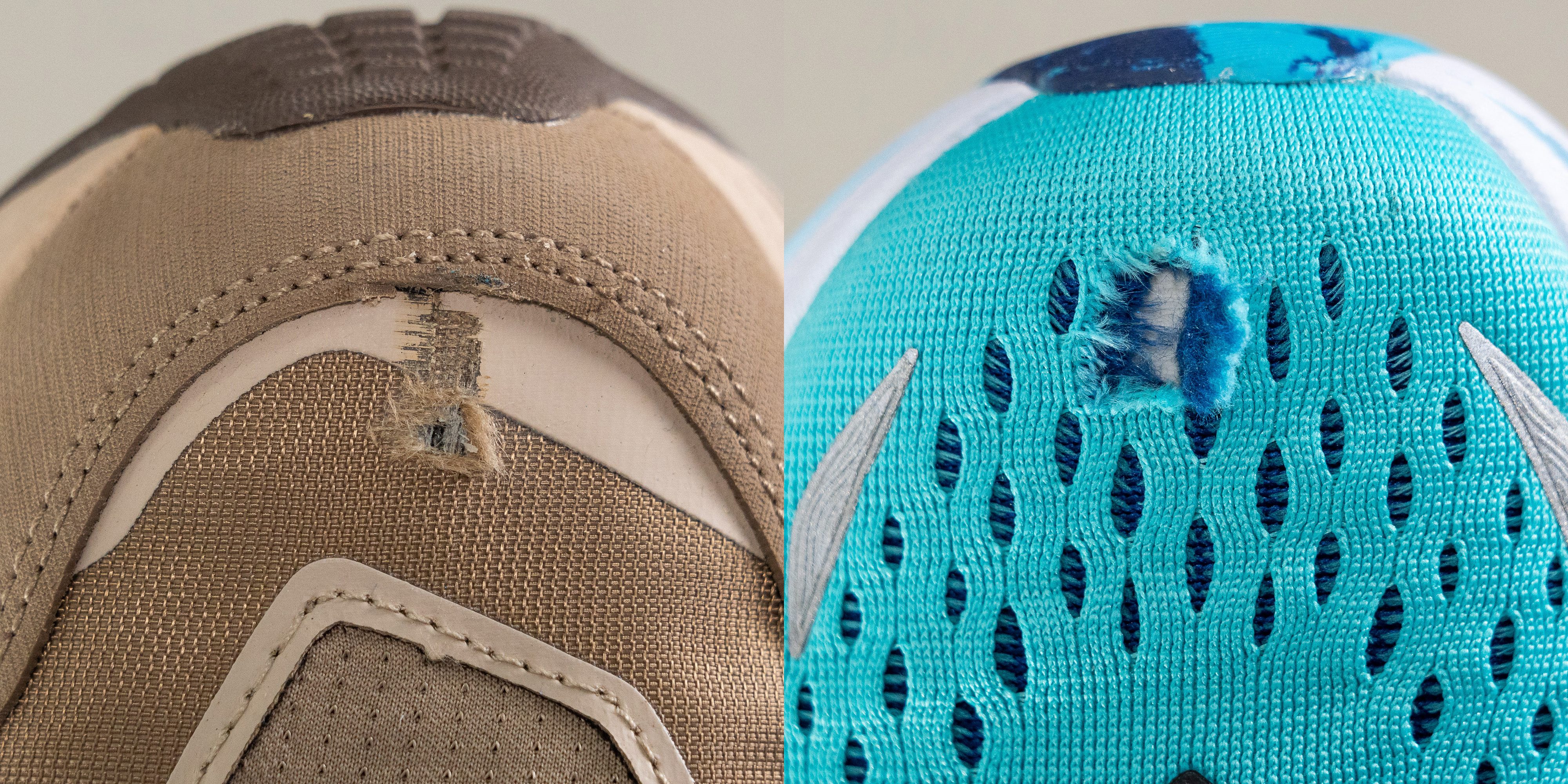
Our manual examination left us with the impression that you'll likely get tired of this shoe long before it deteriorates. It boasts multiple layers of protection, fantastic padding, and provides great comfort.
Unmatched cushioning
We are in love with the cushioning aspect of the Anacapa Low GTX! Its stouter-than-average heel provides double the amount of impact protection and support. The extended heel design also helps to make heel-to-toe transitions smoother and landings softer.

Our experience with the shoe's comfortable and plush cushioning was confirmed in the lab. Using a durometer, we measured its foam softness at 23.3 HA, making it 30% softer than hiking shoes on average!
This amazing Hoka plushness was indispensable for pushing through our all-day treks. Incredibly well-cushioned, the Anacapa offers plenty of underfoot. The shoe is perfect for cruising long distances as it keeps the foot comfortable for many miles a day.
We always have a hard time when comparing with Hoka official numbers regarding stack height and drop.
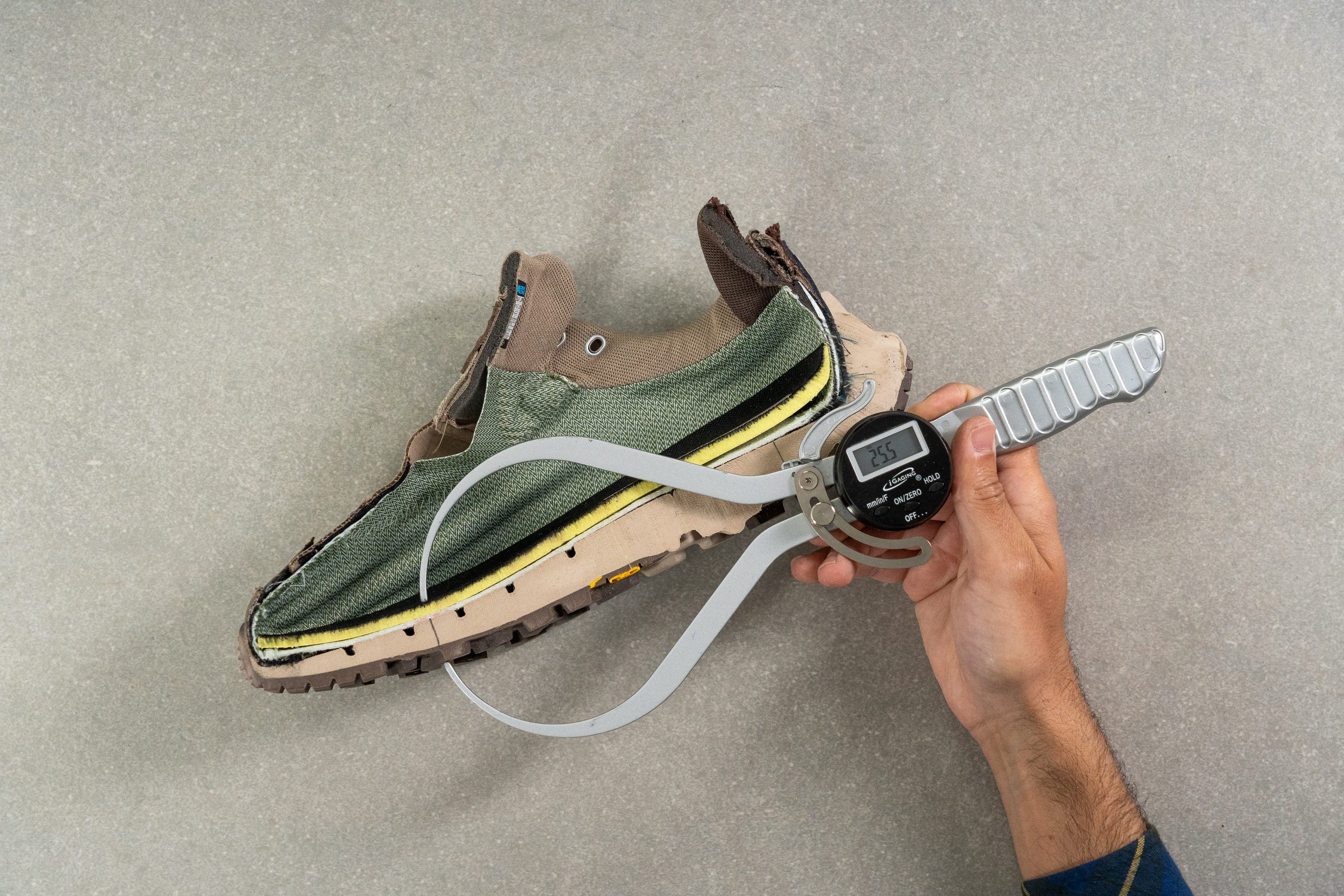
Hoka claims that the shoe possesses a stack height of 28/22 mm—according to the men's version—with a 6-mm heel-to-toe drop. However, when we utilized our caliper for measurement, we discovered that the shoe actually presents a stack of 36.0/25.5 mm, resulting in a 10.5 heel-to-toe drop. Classic Hoka!
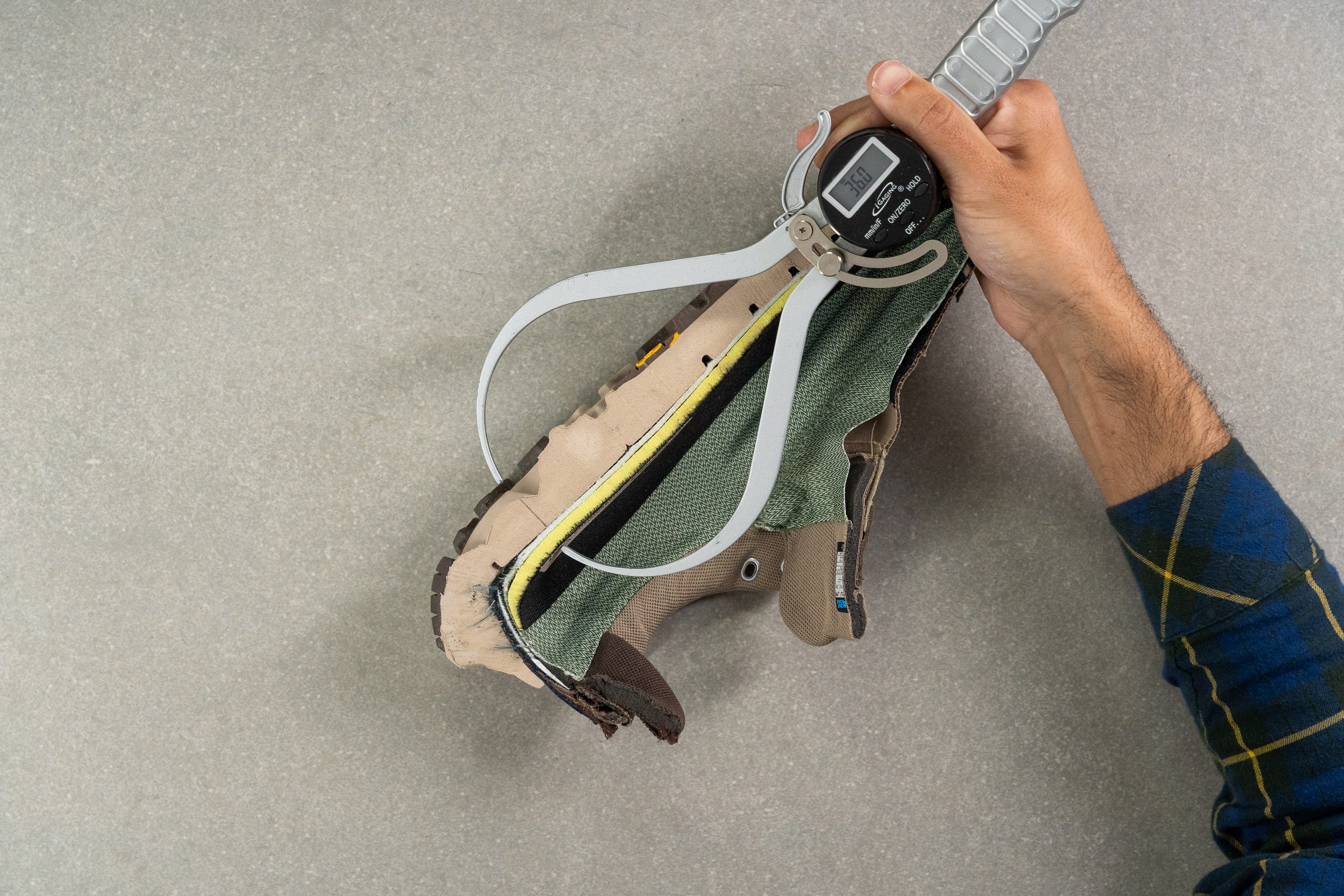
The Anacapa Low GTX also features a rocker design which resembles that of a running shoe.
Hoka loves crafting rockered running shoes, and this time they incorporated that design into this hiking shoe as well. The Anacapa showcases an exceptionally rockered construction that can be uncomfortable at first.
We happen to be familiar with the rocker from the brand's running shoes, so we highly appreciated the same feature in a hiker! It feels as though the shoe propels us forward.
Podiatrist-approved
Wearing this Hoka hiking shoe, we couldn't help but notice how much easier it was on our knees and lower backs compared to other shoes.
No wonder the shoe received a Seal of Acceptance from the American Podiatric Medical Association.
One of the key factors contributing to the exceptional comfort of this shoe is its balance of rigidity. In our torsional test, we gave it a rating of 4 out of 5, while in the longitudinal test, it achieved a score of 3 out of 5. These manual evaluations are exactly the same as the average of hiking shoes.
Moreover, during our signature bending test—where we measure the force required to bend the shoe to a 90º angle—we also found that it strikes a balance between stiff and flexible! It took 37.6N to bend the shoe which is the same as it takes a hiking shoe on average.
Gore-Tex waterproofing at its best
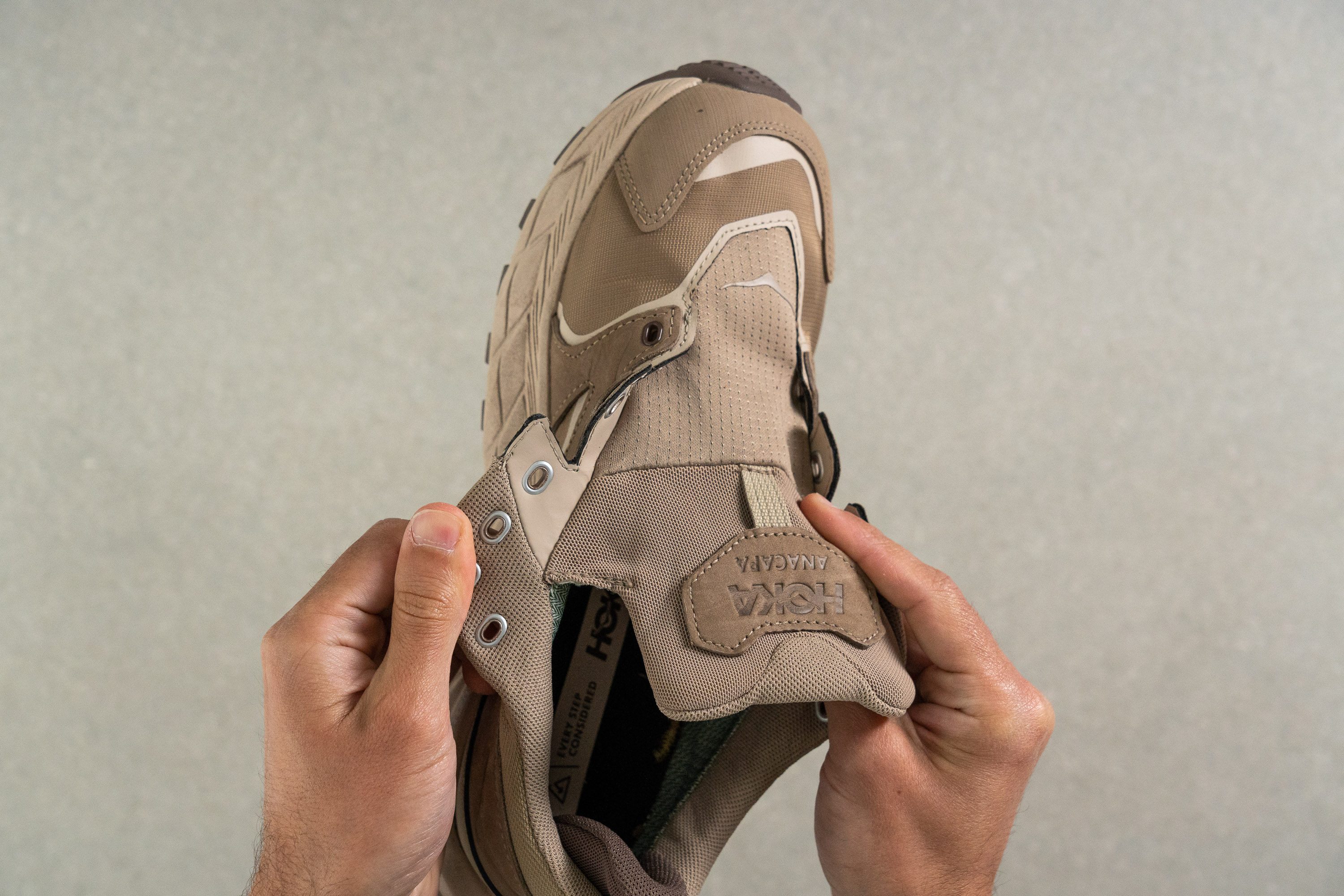
The shoe’s fully waterproof upper (care of Gore-Tex and Nubuck leather) and gusseted tongue translate to watertight hikes, even in three-inch-deep puddles and the like.
We tested the shoe in the streams by standing in the water for 5 minutes and we are happy to report that the material never soaked through! In addition, Nubuck proved to be quick-drying as well.
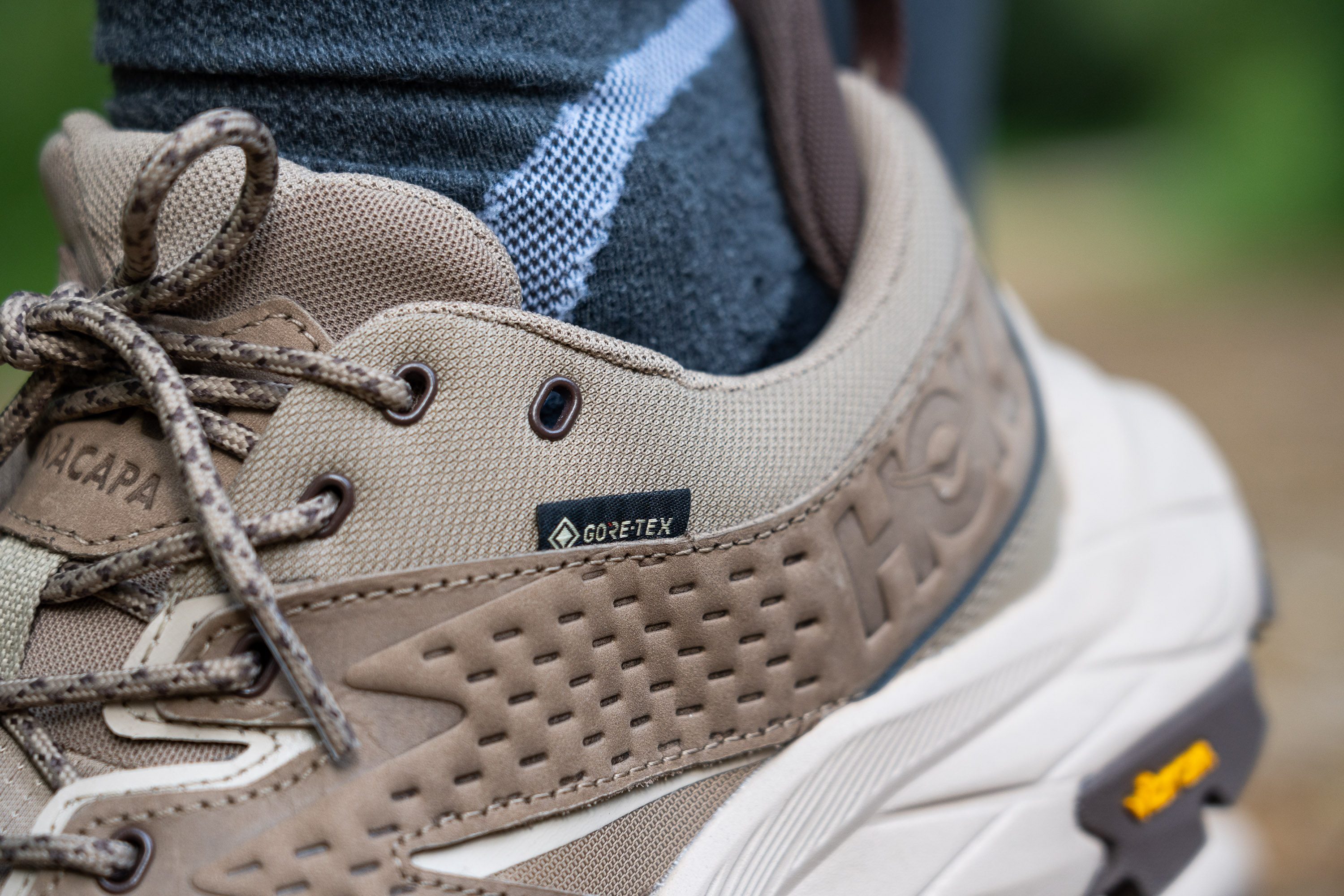
The GTX membrane does a terrific job keeping the interiors dry and warm which makes the Anacapa Low GTX a great choice for winter.
Winter aficionados rejoice
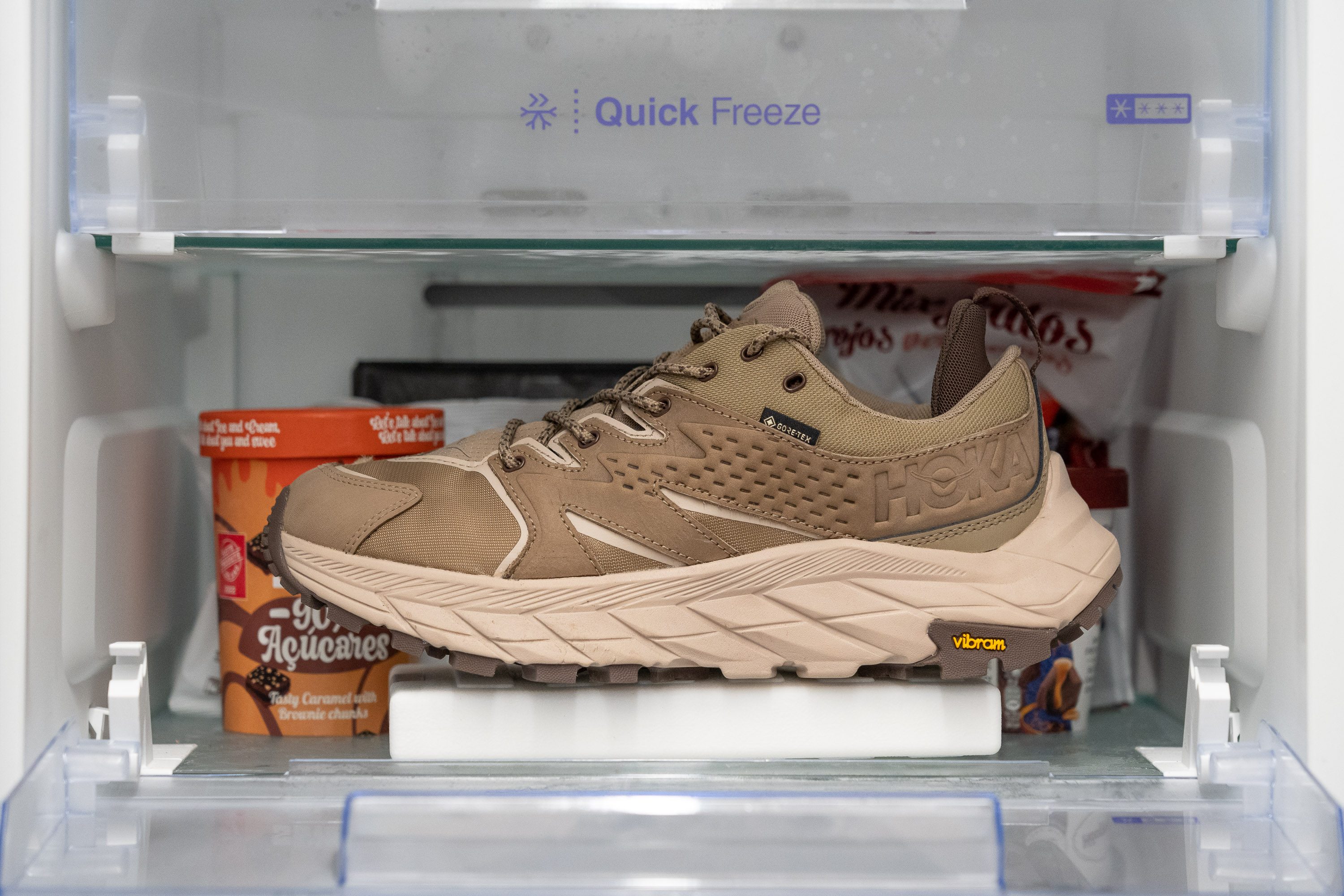
Winter hiking attracts a diverse community of outdoor enthusiasts, and that's why we love testing hiking shoes and boots in cold temperatures. This approach allows us to gauge their performance in chilly conditions.
The Anacapa Low GTX performed exceptionally well! It only came 18.3% firmer and 37.1% stiffer, which is well below the average numbers (23.6%/46.3%). On top of that, the 36.0-mm stack height isolates you from the freezing floor effectively.
Rock-solid stability
One of the biggest concerns of hiking aficionados is that a soft midsole can make a shoe too unstable.
This is not a problem with the Anacapa. Upon careful examination in our lab, we uncovered Hoka's brilliant strategy of crafting an impressively wide shoe to complement its soft midsole!

With a generous width of 113.2 mm in the forefoot and 93.1 mm in the heel, it boasts the widest platform we have ever measured in a hiking shoe.
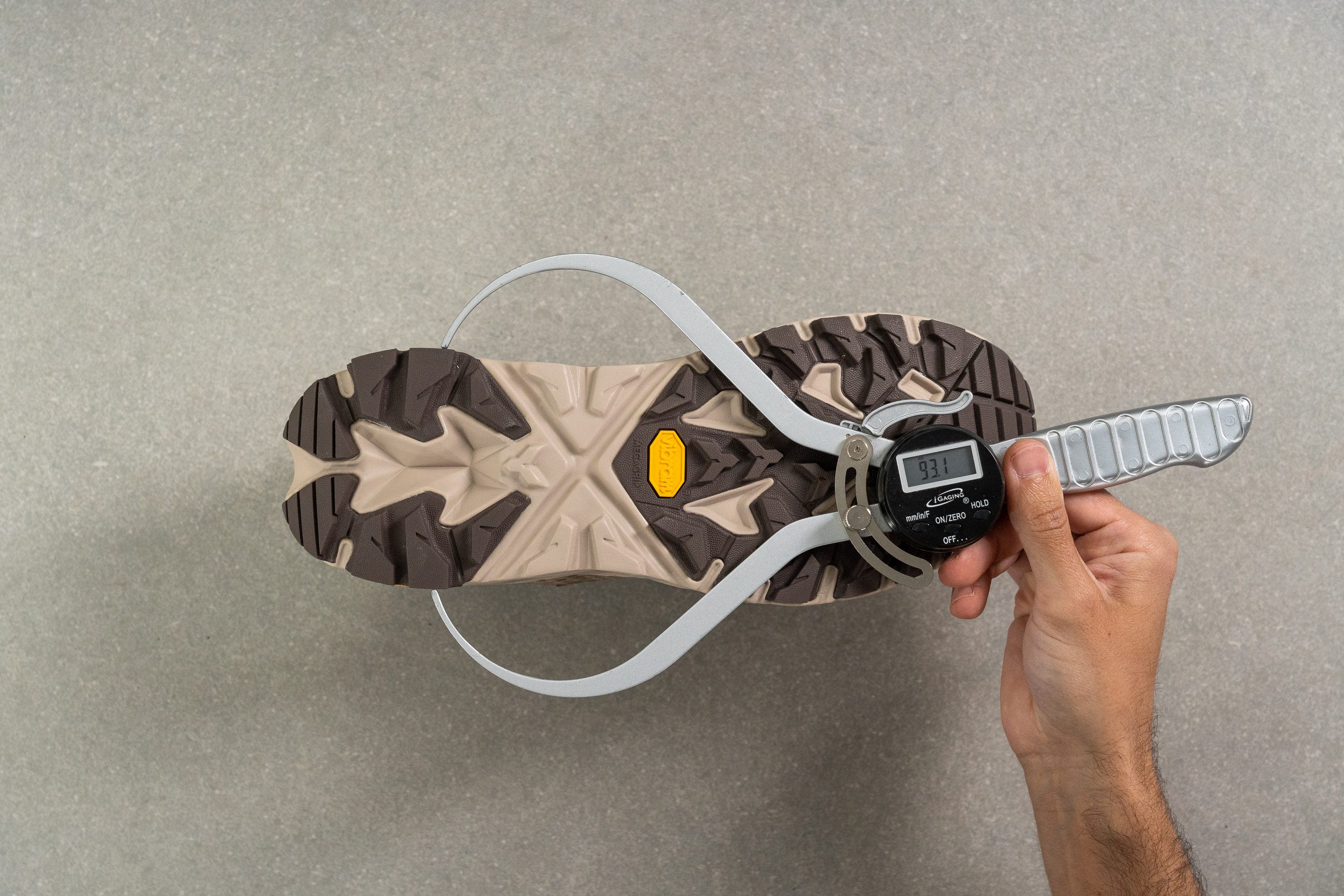
In-shoe comfort and roomy toe box
The Anacapa Low felt fantastic coming straight from the box and we never felt like we needed to break it in.
The Anacapa features a reasonably spacious toe box, which is highly beneficial for individuals with wide feet, especially considering that the shoe is not available in wide options.

While it's true that it may not be the widest shoe in the market—it came slightly narrower than the average hiking shoe after our measurements—it remains suitable for the majority of hikers, especially because this shoe is not made at all for summer hikes.
Extra comfort is also provided around the ankle thanks to the Anacapa Low GTX’s rare tongue-like heel padding.
Being a proper hiking shoe, we expected a stiff heel counter. And Hoka gave it to us. We rated it at 4 out of 5, with being 5 the stiffest.
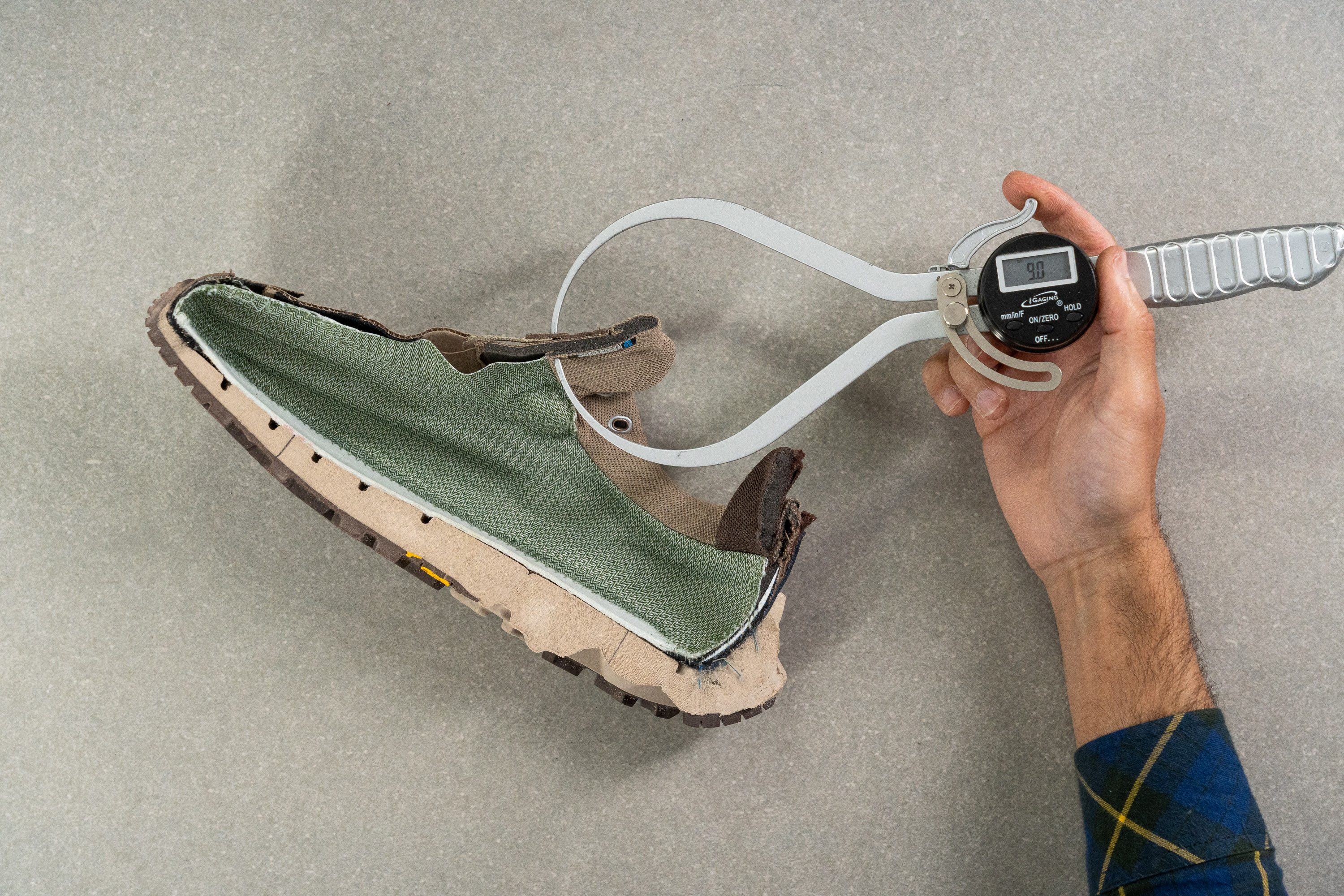
In terms of comfort, the tongue appeared sufficient to ensure a pleasant walk for extended periods, measuring 9.0 in thickness. However, it falls short by 33% compared to the average tongue.
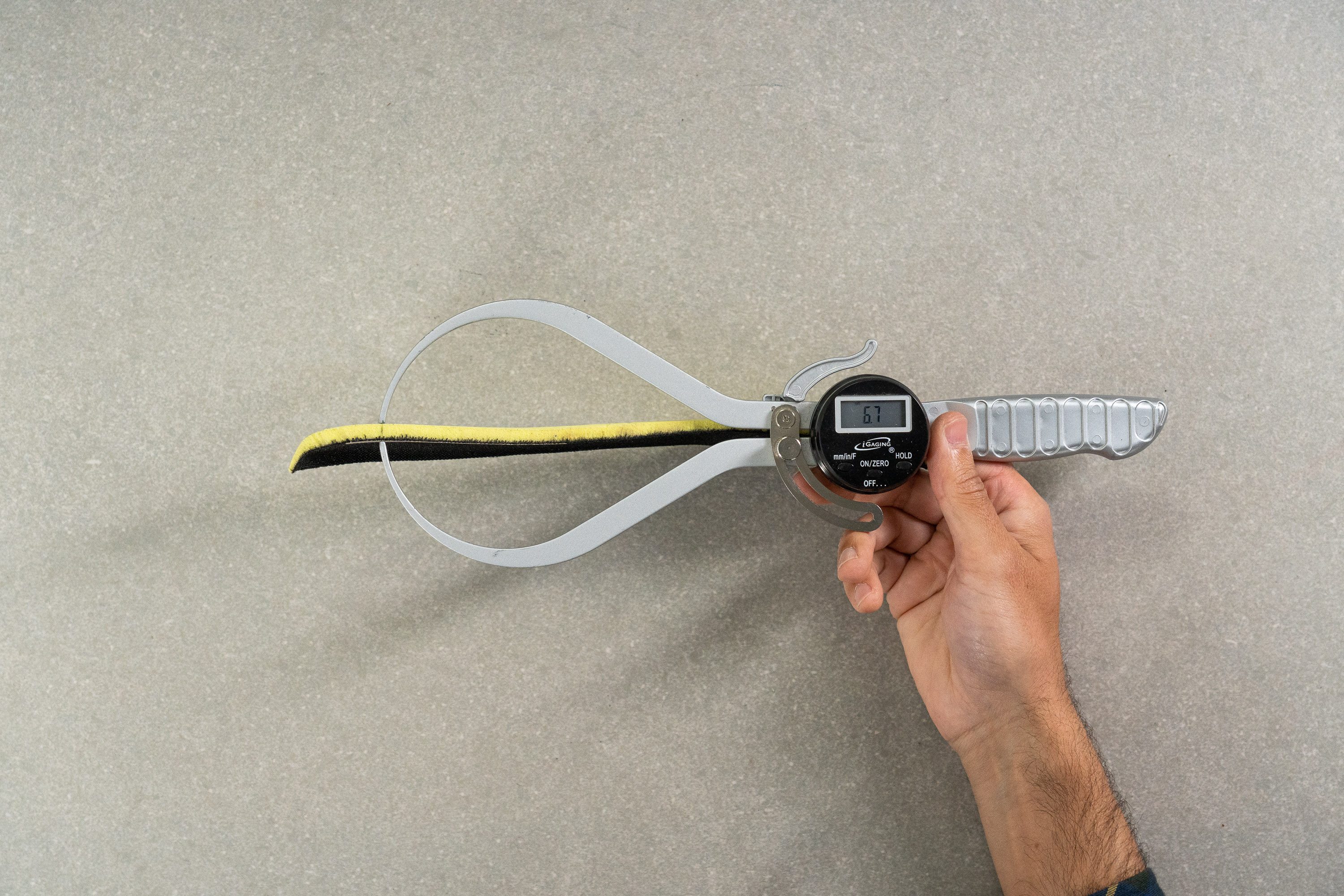
Speaking of thickness, the insole comes at 6.7 mm, offering substantial cushioning for your feet—especially during those long expeditions!
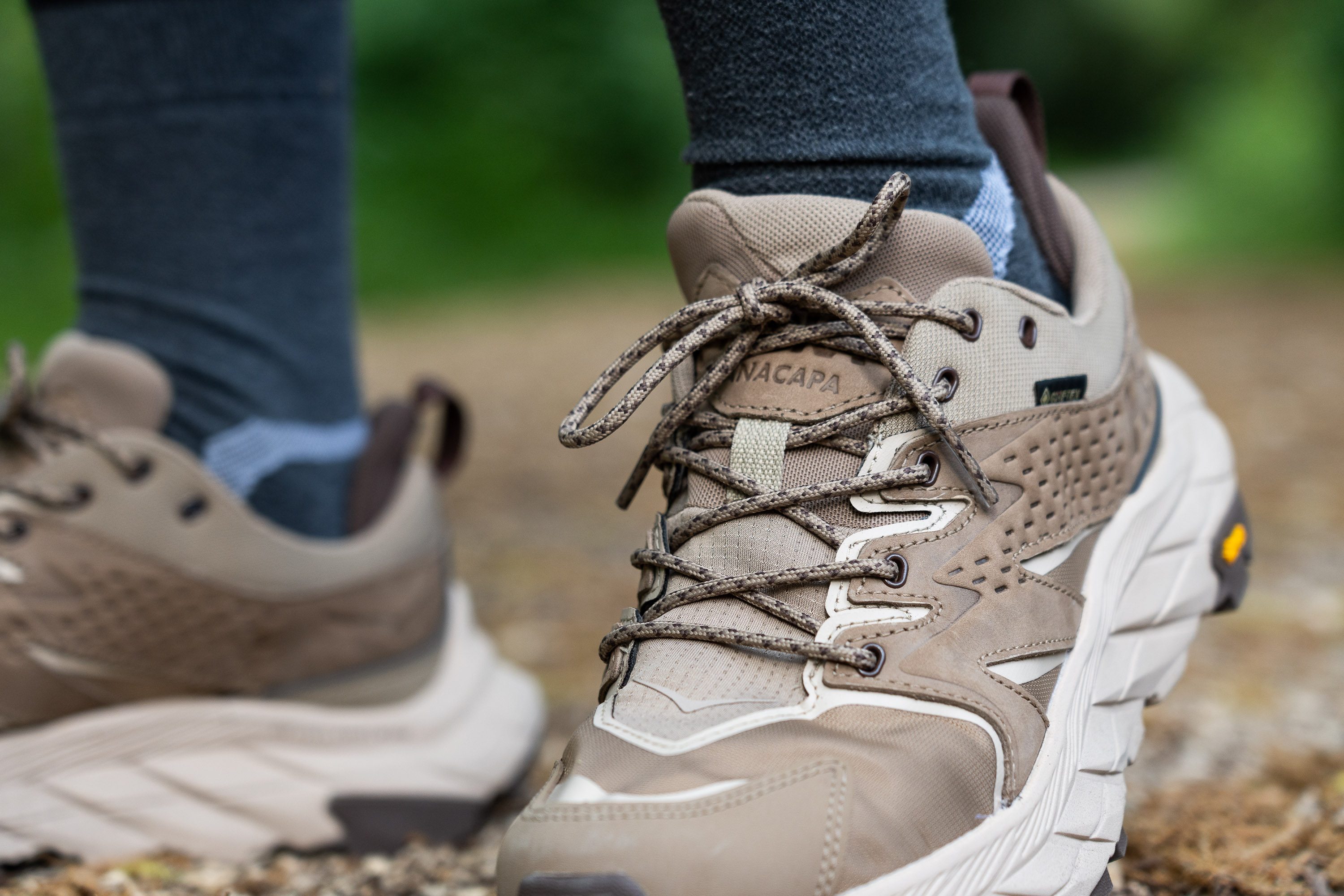
The laces of this exceptional hiking shoe meet all expectations. They are rounded, stylish, and built to last.
Anacapa Low is light for its kind!

At 13.9 oz (393 g) in a men’s US 9, the shoe is light. We are impressed with how light this Hoka shoe feels given its substantial build.
Anacapa Low GTX grips all surfaces
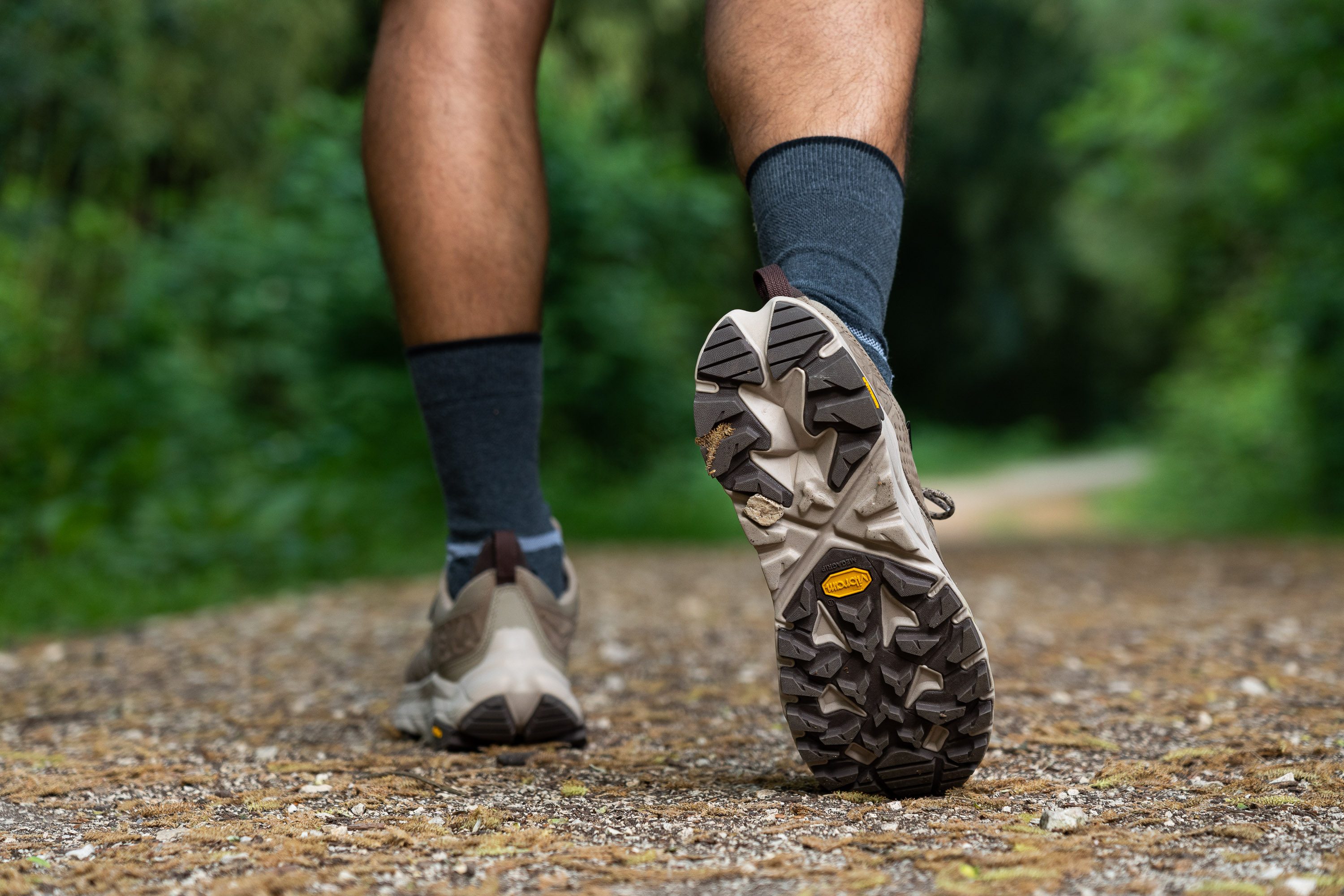
With its strategically placed 5-mm lugs, the shoe performed admirably on all kinds of terrain: rocks, stones, mud, gravel, snow, ice, etc. Wearing the Anacapa in urban conditions, we even found it to be suitable for the pavement.
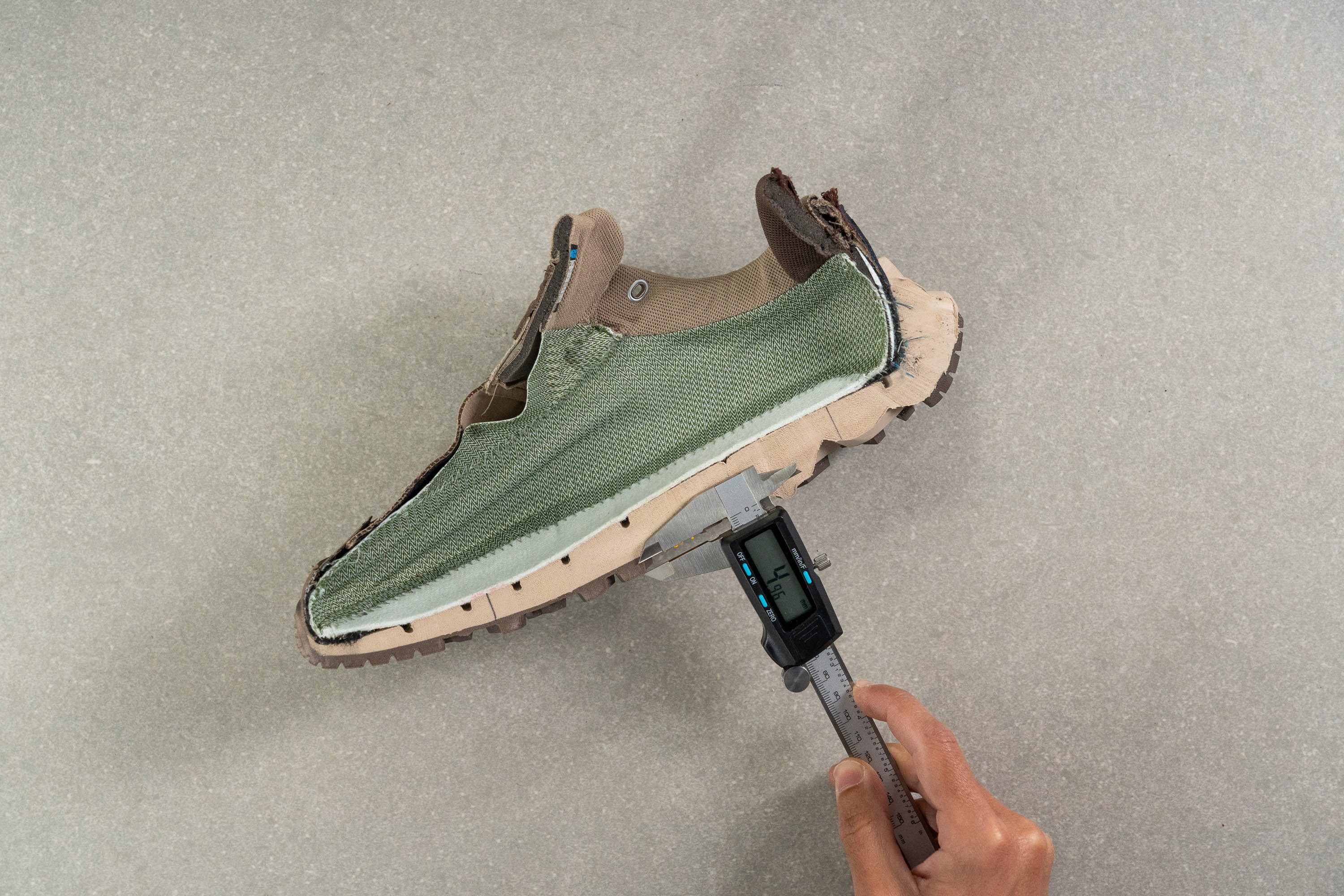
With its impressively thick lugs, a substantial 1.9-mm layer of rubber protecting the midsole, and Vibram's renowned commitment to durability, you can confidently anticipate the Anacapa to endure and provide exceptional grip almost forever.
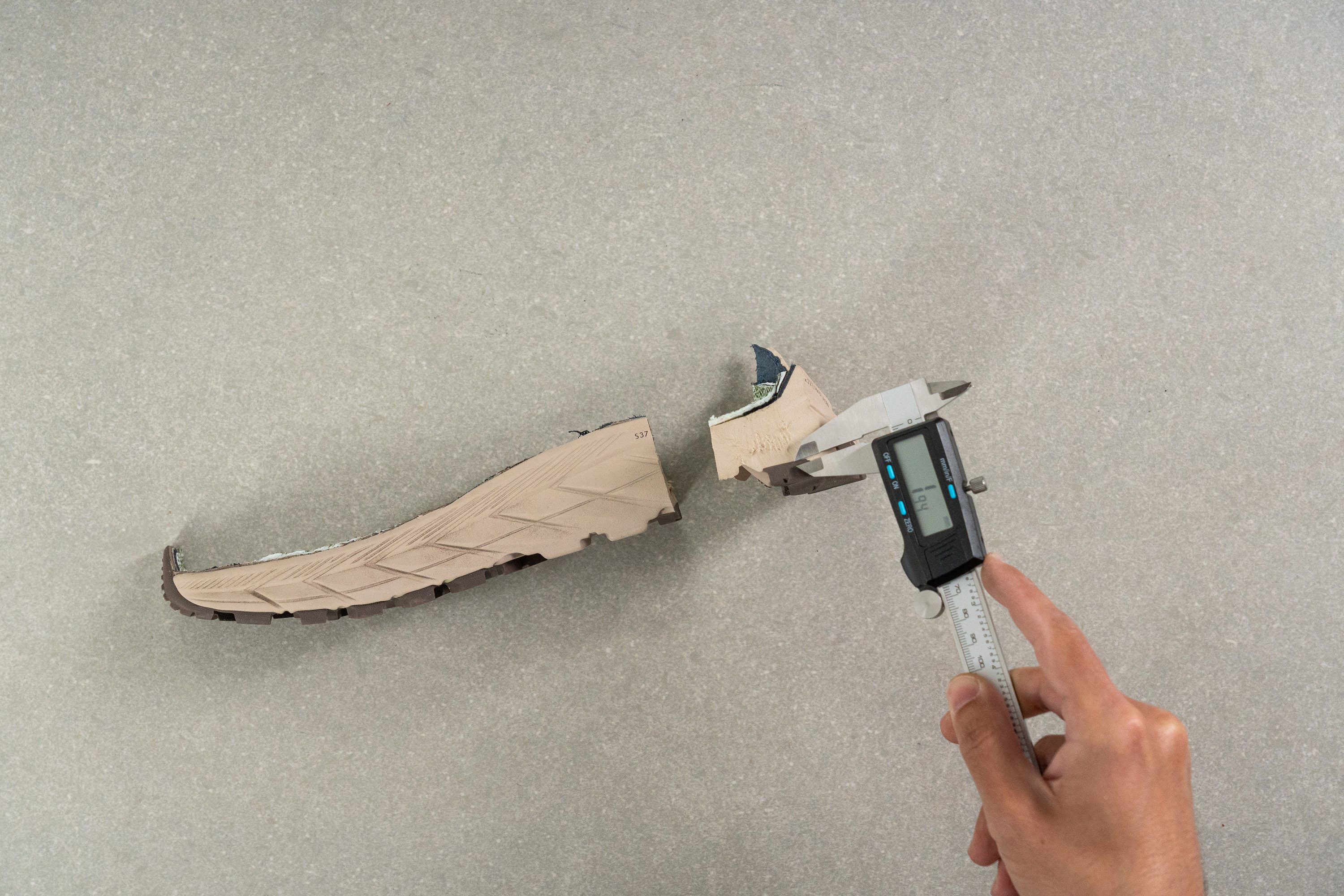
We conducted a hardness measurement of the Vibram rubber, and it registered an impressive 88.3 HC, surpassing the average hiking shoe. This indicates that the outsole of this shoe will excel in terms of durability.
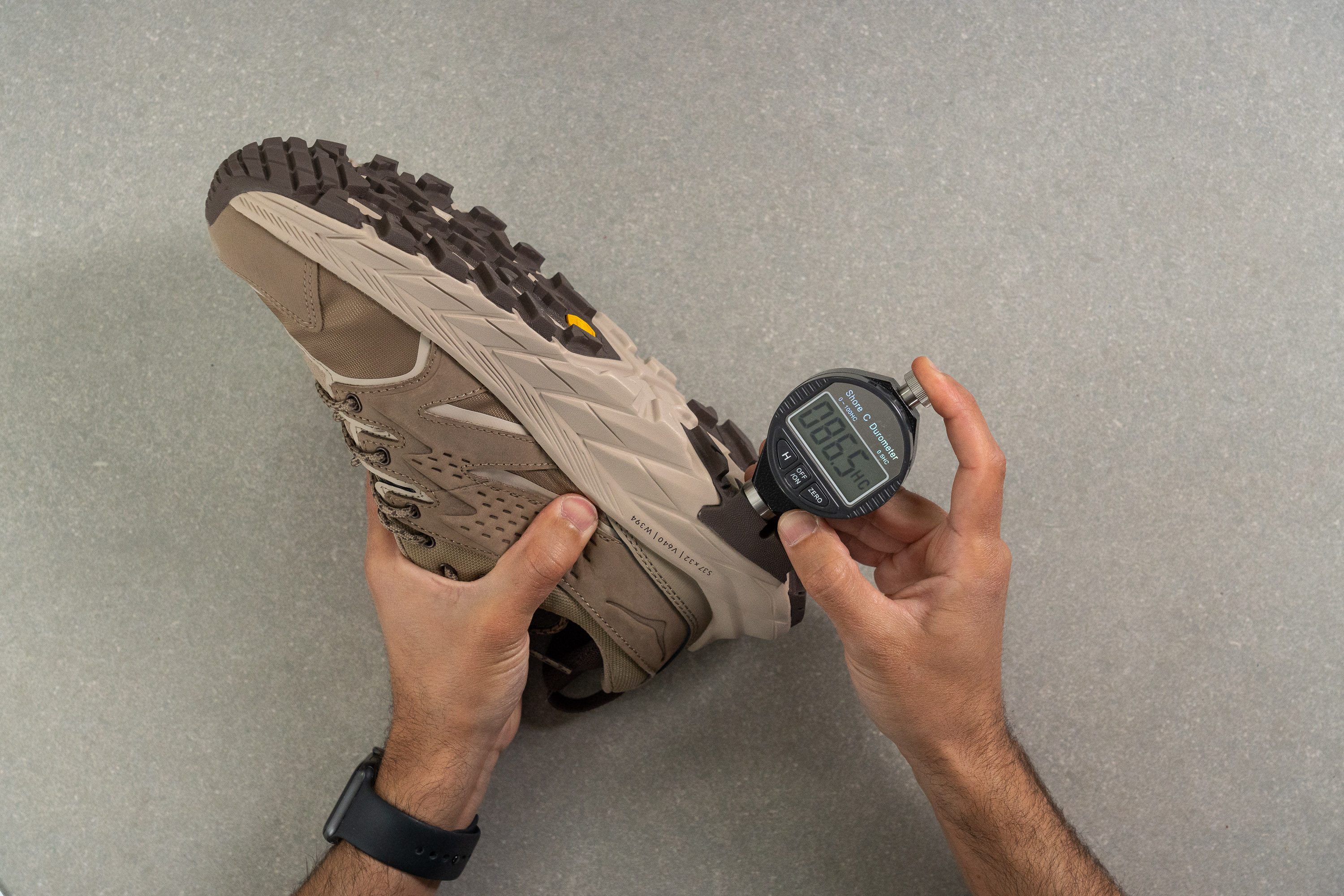
It comes with a price
The Anacapa Low GTX is among the more expensive low-top hikers on the market.

With its asking price of $170, the shoe costs $20 more than waterproof hiking shoes on average ($150). But the good news is that this Hoka shoe is 100% worth the money!
The Anacapa Low GTX and the environment
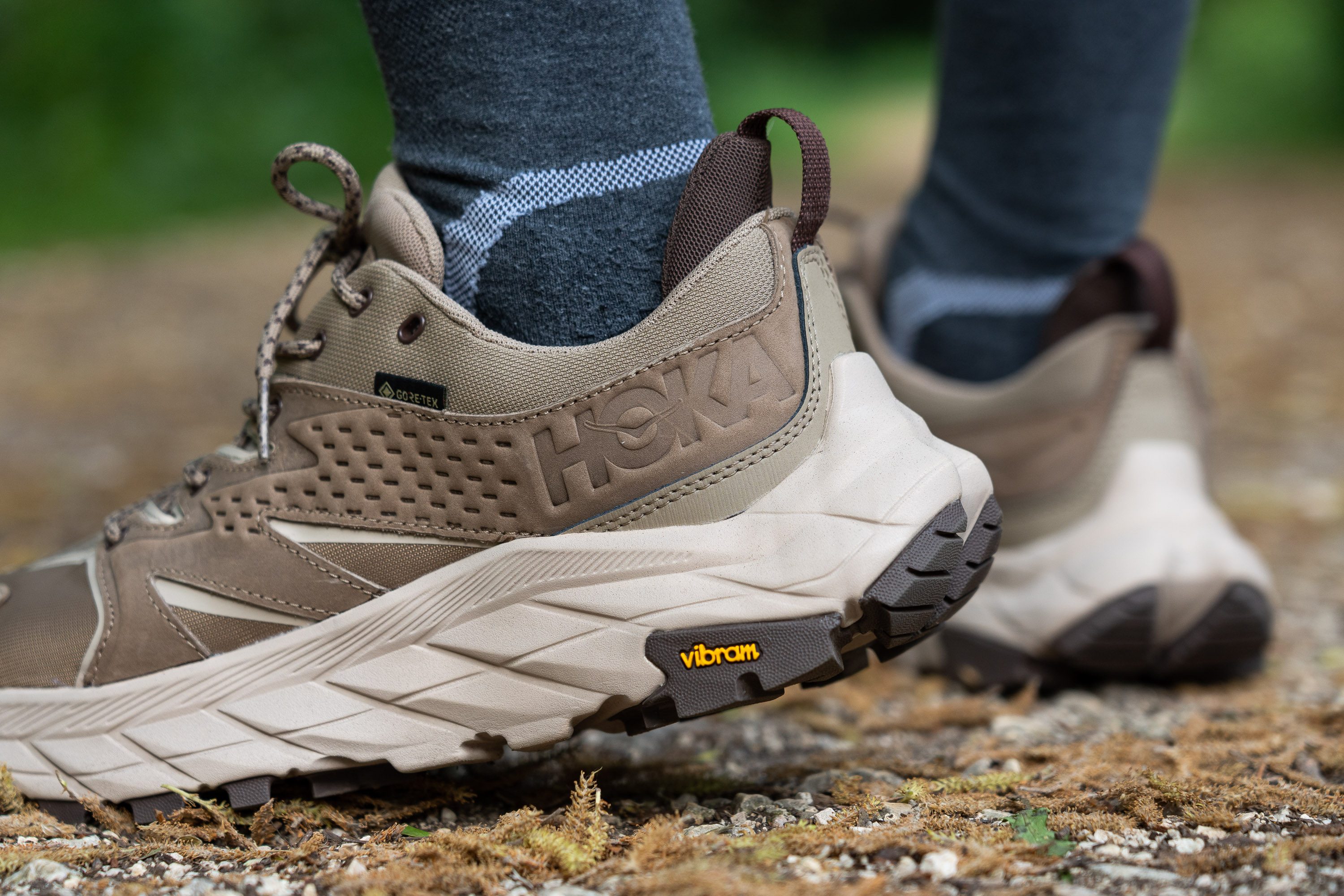
Going green is a race many brands enthusiastically participate in these days. Hoka’s entry is, of course, the Anacapa Low GTX. The following are what make the featured shoe an exemplar of sustainability:
- The shoe’s water-repellent upper went through a PFC-free process. PFCs or perfluorocarbons are like plastic—they do not break down easily.
- The Anacapa Low GTX’s upper is partly made of recycled fabric, particularly polyester.
- Its cushy footbed is made with 50% soybean oil, a more sustainable replacement for petroleum.

